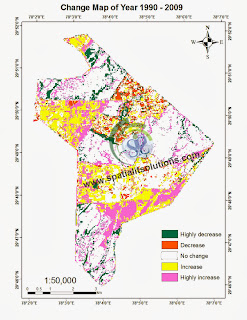Remote Sensing is the technique that is used for obtaining information about objects by analyzing the data that is collected by special instruments that do not have any physical contact with the object/s under investigation.
Alternatively, it can be termed as acquiring the salient information of an object or aspect without the need to physically touch it. The technique generally makes use of aerial sensor technologies that detect or classify the objects on earth by means of electromagnetic radiations that are emitted by aircraft or satellites. The two main components of remote Sensing are “Data Capture” and “Data Analysis”.
Alternatively, it can be termed as acquiring the salient information of an object or aspect without the need to physically touch it. The technique generally makes use of aerial sensor technologies that detect or classify the objects on earth by means of electromagnetic radiations that are emitted by aircraft or satellites. The two main components of remote Sensing are “Data Capture” and “Data Analysis”.
 |
| Remote Sensing |
Remote Sensing is broadly categorized into two main types:
Active Remote Sensing
Passive Remote Sensing
In Passive Remote Sensing passive sensors are able to detect the natural radiations that are emitted by objects and their surrounding areas. They respond to external stimuli. Reflected sunlight is the most common source of radiation that is measured by passive sensors. Charge-coupled devices, infrared and radiometers are some examples of passive sensors.
As the name also suggests in Active Remote Sensing Active sensors are used to measure the radiations that are reflected back from the target bodies. They respond to internal stimuli. RADAR is a common example of active remote sensing technique. A RADAR measures the time delay between the emission and return of a radiation, based on which it calculates the location, speed and the direction of an object.
Following are the application areas for Remote Sensing technology:
Ocean Applications: The technique of remote Sensing can also be used to monitor ocean circulation and current system. It is also used to measure ocean temperature and the wave heights. Remote sensing can also be used to track sea ice or in cases where you want to get a better understanding of the oceans and manage ocean resources.
Hazard Assessment: It has its importance when there is a need to track hurricanes, earthquakes, erosion, and floods and other natural disasters. The data that is given can be used to assess the effects of natural disasters. Based on the data that is obtained by Remote Sensors some strategies can be made that can be used before and after the disaster.
 |
| Hazard Assessment |
Coastal Applications: Remote Sensing is used to monitor the changes that occur on the shoreline or even in the case of tracking sediment transport etc. The data that is obtained by Remote Sensing can also be used for coastal mapping and for preventing erosion.
The complete remote sensing process can be summarized as follows:
The data is captured by the Remote Sensors, such information is recorded and then analyzed by some interpretive and measurement techniques. This is done in order to provide useful information about the objects that are under investigation. The techniques are diverse and vary from the traditional methods of visual interpretation to the methods using computer processing.
More Knowledge Contact :- Spatial IT Solutions
I am thankful to the Geospatial Consulting Services who have provided me an in detail information on Remote Sensing. The image understanding for the same is very good.
ReplyDelete